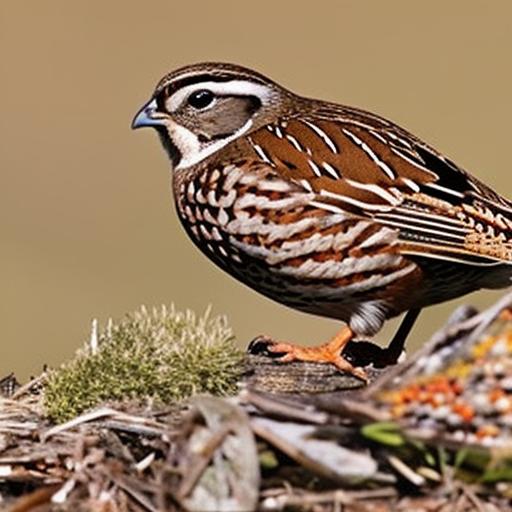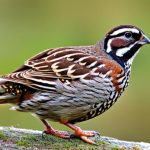Setting up a poultry farm requires a significant initial investment. The first expense is the purchase of the land, which needs to be large enough to accommodate the poultry houses and provide space for the birds to roam. The cost of land varies depending on location, but it is a substantial investment that needs to be factored into the budget. Once the land is secured, the next major expense is the construction of the poultry houses. These houses need to be well-ventilated, insulated, and equipped with proper lighting and heating systems to ensure the birds’ comfort and productivity. The construction costs can vary depending on the size and design of the houses, but it is a significant upfront expense. Additionally, there are costs associated with purchasing equipment such as feeders, waterers, nesting boxes, and egg collection systems. These items are essential for the efficient operation of the farm and can add up to a substantial amount. Finally, there are administrative costs such as obtaining necessary permits and licenses, as well as setting up accounting and record-keeping systems. All of these initial setup costs need to be carefully budgeted for in order to ensure the successful establishment of a poultry farm.
Establishing a poultry farm involves a number of initial setup costs that need to be carefully considered and budgeted for. One of the first expenses is the purchase of the land, which needs to be large enough to accommodate the poultry houses and provide space for the birds to roam. The cost of land can vary depending on location, but it is a significant investment that needs to be factored into the budget. Once the land is secured, the next major expense is the construction of the poultry houses. These houses need to be well-ventilated, insulated, and equipped with proper lighting and heating systems to ensure the birds’ comfort and productivity. The construction costs can vary depending on the size and design of the houses, but it is a significant upfront expense. Additionally, there are costs associated with purchasing equipment such as feeders, waterers, nesting boxes, and egg collection systems. These items are essential for the efficient operation of the farm and can add up to a substantial amount. Finally, there are administrative costs such as obtaining necessary permits and licenses, as well as setting up accounting and record-keeping systems. All of these initial setup costs need to be carefully budgeted for in order to ensure the successful establishment of a poultry farm.
Key Takeaways
- Initial setup costs include purchasing a coop, nesting boxes, and feeders, as well as fencing for the chicken run.
- Housing and equipment expenses involve ongoing maintenance and repairs for the coop, as well as bedding and cleaning supplies.
- Feed and nutrition costs include purchasing chicken feed, supplements, and treats, as well as ensuring access to clean water at all times.
- Veterinary care and health expenses encompass regular check-ups, vaccinations, and potential treatment for common chicken illnesses.
- Egg incubation and brooding costs involve purchasing an incubator, brooder, heat lamps, and other necessary equipment for hatching and raising chicks.
Housing and Equipment Expenses
Once the initial setup costs are covered, there are ongoing expenses associated with housing and equipment maintenance on a poultry farm. The poultry houses require regular maintenance to ensure they remain in good condition and provide a comfortable environment for the birds. This includes repairs to the structure, as well as regular cleaning and disinfection to prevent disease outbreaks. Additionally, there are ongoing expenses associated with heating and lighting the poultry houses, as well as providing ventilation to ensure good air quality. All of these expenses need to be factored into the budget to ensure the long-term sustainability of the farm. In addition to housing expenses, there are ongoing costs associated with maintaining and replacing equipment such as feeders, waterers, and egg collection systems. These items can wear out over time and need to be replaced to ensure the efficient operation of the farm. It is important to budget for these ongoing housing and equipment expenses to ensure that the farm remains productive and profitable.
Maintaining a poultry farm involves ongoing expenses related to housing and equipment. The poultry houses require regular maintenance to ensure they remain in good condition and provide a comfortable environment for the birds. This includes repairs to the structure, as well as regular cleaning and disinfection to prevent disease outbreaks. Additionally, there are ongoing expenses associated with heating and lighting the poultry houses, as well as providing ventilation to ensure good air quality. All of these expenses need to be factored into the budget to ensure the long-term sustainability of the farm. In addition to housing expenses, there are ongoing costs associated with maintaining and replacing equipment such as feeders, waterers, and egg collection systems. These items can wear out over time and need to be replaced to ensure the efficient operation of the farm. It is important to budget for these ongoing housing and equipment expenses to ensure that the farm remains productive and profitable.
Feed and Nutrition Costs
One of the largest ongoing expenses on a poultry farm is feed and nutrition costs. Poultry require a balanced diet that provides all the necessary nutrients for growth, egg production, and overall health. The cost of feed can vary depending on factors such as ingredient prices, seasonal fluctuations, and the number of birds being fed. It is important to budget for this expense and work with a nutritionist to develop a feeding program that meets the birds’ nutritional needs while also being cost-effective. In addition to feed costs, there are expenses associated with supplements such as vitamins and minerals that may need to be added to the birds’ diet. It is important to work with a veterinarian or nutritionist to ensure that the birds are receiving all the necessary nutrients for optimal health and productivity.
Poultry require a balanced diet that provides all the necessary nutrients for growth, egg production, and overall health. The cost of feed can vary depending on factors such as ingredient prices, seasonal fluctuations, and the number of birds being fed. It is important to budget for this expense and work with a nutritionist to develop a feeding program that meets the birds’ nutritional needs while also being cost-effective. In addition to feed costs, there are expenses associated with supplements such as vitamins and minerals that may need to be added to the birds’ diet. It is important to work with a veterinarian or nutritionist to ensure that the birds are receiving all the necessary nutrients for optimal health and productivity.
Veterinary Care and Health Expenses
Maintaining the health of the flock is essential for a successful poultry farm, but it also comes with its own set of expenses. Veterinary care is an ongoing cost that includes routine check-ups, vaccinations, and treatments for common poultry diseases. It is important to work with a veterinarian who specializes in poultry health to develop a comprehensive health plan for the flock. In addition to veterinary care, there are expenses associated with maintaining good biosecurity practices on the farm to prevent disease outbreaks. This includes measures such as controlling access to the farm, proper waste management, and regular cleaning and disinfection of the poultry houses. All of these health-related expenses need to be factored into the budget to ensure that the flock remains healthy and productive.
Maintaining the health of the flock is essential for a successful poultry farm, but it also comes with its own set of expenses. Veterinary care is an ongoing cost that includes routine check-ups, vaccinations, and treatments for common poultry diseases. It is important to work with a veterinarian who specializes in poultry health to develop a comprehensive health plan for the flock. In addition to veterinary care, there are expenses associated with maintaining good biosecurity practices on the farm to prevent disease outbreaks. This includes measures such as controlling access to the farm, proper waste management, and regular cleaning and disinfection of the poultry houses. All of these health-related expenses need to be factored into the budget to ensure that the flock remains healthy and productive.
Egg Incubation and Brooding Costs
For poultry farms that focus on egg production, there are additional expenses associated with egg incubation and brooding. Incubators are used to hatch fertilized eggs into chicks, and they require careful monitoring of temperature and humidity levels to ensure successful hatching. Incubators can vary in size and capacity, so their cost will depend on the scale of production. Once hatched, chicks need to be brooded in a warm environment until they are old enough to regulate their body temperature. This requires specialized equipment such as brooders or heat lamps, as well as careful monitoring of temperature and ventilation in the brooding area. These incubation and brooding costs need to be factored into the budget for egg production farms.
For poultry farms that focus on egg production, there are additional expenses associated with egg incubation and brooding. Incubators are used to hatch fertilized eggs into chicks, and they require careful monitoring of temperature and humidity levels to ensure successful hatching. Incubators can vary in size and capacity, so their cost will depend on the scale of production. Once hatched, chicks need to be brooded in a warm environment until they are old enough to regulate their body temperature. This requires specialized equipment such as brooders or heat lamps, as well as careful monitoring of temperature and ventilation in the brooding area. These incubation and brooding costs need to be factored into the budget for egg production farms.
Breeding and Reproduction Expenses

Breeding and reproduction expenses are another consideration for poultry farms that aim to maintain their own breeding stock. This includes costs associated with acquiring breeding birds or hatching eggs from reputable breeders with desirable genetic traits. Additionally, there are expenses related to maintaining breeding pens or separate housing for breeding stock, as well as monitoring fertility rates and managing breeding programs. For farms that rely on natural mating rather than artificial insemination, there may be additional costs associated with maintaining roosters or other breeding males within the flock. It is important to carefully consider these breeding and reproduction expenses when planning for long-term sustainability and genetic improvement within a poultry farm.
Breeding and reproduction expenses are another consideration for poultry farms that aim to maintain their own breeding stock. This includes costs associated with acquiring breeding birds or hatching eggs from reputable breeders with desirable genetic traits. Additionally, there are expenses related to maintaining breeding pens or separate housing for breeding stock, as well as monitoring fertility rates and managing breeding programs. For farms that rely on natural mating rather than artificial insemination, there may be additional costs associated with maintaining roosters or other breeding males within the flock. It is important to carefully consider these breeding and reproduction expenses when planning for long-term sustainability and genetic improvement within a poultry farm.
Miscellaneous Expenses
In addition to the major expenses outlined above, there are various miscellaneous expenses that need to be considered when operating a poultry farm. These can include costs associated with labor for daily care of the birds, transportation of supplies or products, insurance premiums, marketing efforts, utilities such as electricity or water usage, and administrative expenses such as accounting or legal fees. It is important to carefully track all these miscellaneous expenses in order to accurately assess the overall cost of running a poultry farm.
In addition to the major expenses outlined above, there are various miscellaneous expenses that need to be considered when operating a poultry farm. These can include costs associated with labor for daily care of the birds, transportation of supplies or products, insurance premiums, marketing efforts, utilities such as electricity or water usage, and administrative expenses such as accounting or legal fees. It is important to carefully track all these miscellaneous expenses in order to accurately assess the overall cost of running a poultry farm.
In conclusion, establishing and maintaining a successful poultry farm involves careful consideration of various expenses across different aspects of operation including initial setup costs, housing and equipment expenses, feed and nutrition costs, veterinary care and health expenses, egg incubation and brooding costs, breeding and reproduction expenses, as well as miscellaneous expenses related to daily operations. By carefully budgeting for these expenses and continuously monitoring costs against revenue generated from sales of eggs or meat products, poultry farmers can ensure long-term sustainability and profitability for their operations.
In conclusion, establishing and maintaining a successful poultry farm involves careful consideration of various expenses across different aspects of operation including initial setup costs, housing and equipment expenses, feed and nutrition costs, veterinary care and health expenses, egg incubation and brooding costs, breeding and reproduction expenses, as well as miscellaneous expenses related to daily operations. By carefully budgeting for these expenses and continuously monitoring costs against revenue generated from sales of eggs or meat products, poultry farmers can ensure long-term sustainability and profitability for their operations. It is essential for poultry farmers to stay informed about market trends, implement efficient management practices, and adapt to changes in the industry to remain competitive and successful. Additionally, investing in quality infrastructure, equipment, and animal care can lead to improved productivity and overall success for the poultry farm.
If you’re considering raising quail, you may also be interested in learning about the cost of keeping them. Poultry Wizard has a helpful article on the expenses associated with keeping quail, which can provide valuable insights for anyone looking to start their own quail flock. For more information on this topic, check out their article on the cost of keeping quail.
FAQs
What are the initial costs of keeping quail?
The initial costs of keeping quail include purchasing a suitable housing or coop, feeders, waterers, and bedding. Additionally, you will need to purchase quail chicks or eggs to start your flock.
What are the ongoing costs of keeping quail?
The ongoing costs of keeping quail include purchasing quail feed, bedding, and any necessary medical supplies. Additionally, there may be costs associated with replacing or repairing equipment and maintaining the quail’s living space.
How much does quail feed cost?
The cost of quail feed can vary depending on the type and quality of feed, as well as the quantity purchased. On average, quail feed can cost around $0.25 to $0.50 per pound.
How much does it cost to maintain a quail coop?
The cost of maintaining a quail coop can vary depending on factors such as the size of the coop, the materials used, and any necessary repairs or upgrades. On average, the cost of maintaining a quail coop can range from $50 to $200 per year.
Are there any unexpected costs associated with keeping quail?
There may be unexpected costs associated with keeping quail, such as veterinary care for sick or injured quail, predator-proofing the coop, or unforeseen equipment repairs. It’s important to budget for these potential expenses.
Meet Walter, the feathered-friend fanatic of Florida! Nestled in the sunshine state, Walter struts through life with his feathered companions, clucking his way to happiness. With a coop that’s fancier than a five-star hotel, he’s the Don Juan of the chicken world. When he’s not teaching his hens to do the cha-cha, you’ll find him in a heated debate with his prized rooster, Sir Clucks-a-Lot. Walter’s poultry passion is no yolk; he’s the sunny-side-up guy you never knew you needed in your flock of friends!







